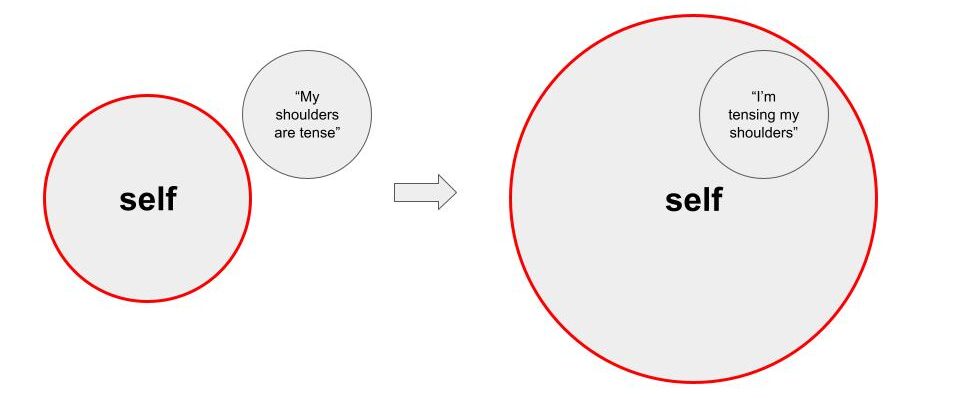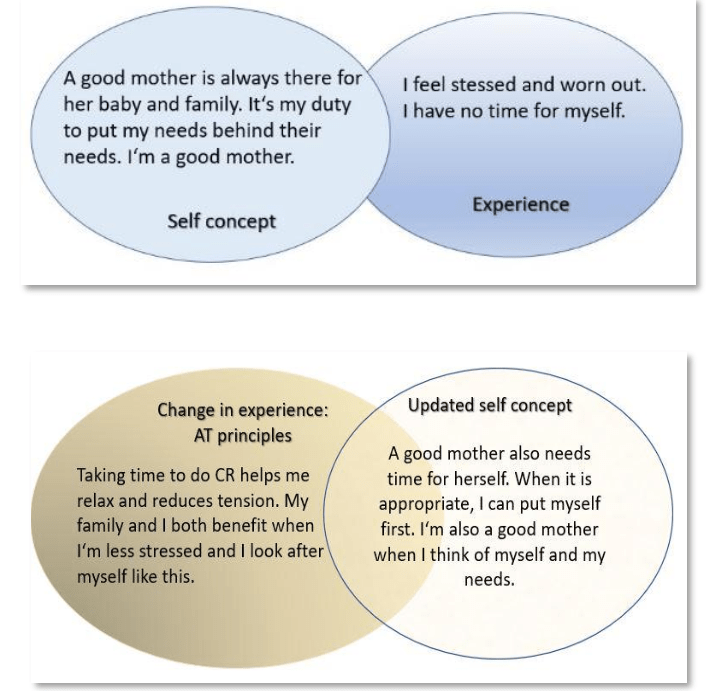This month, Nicola Hanefeld was the lead author of the paper ‘Women’s experiences of using the Alexander Technique in the postpartum’ published in the journal Midwifery. As part of her research, she drew on the work of Carl Rogers, one of the founders of Humanistic Psychology and famous for his person-centred framework in psychotherapy.
In her Ph.D. thesis completed earlier this year, Hanefeld presented three aspects of Rogers’ work which can help elucidate the process of learning the Alexander Technique. I have found her use of the Rogerian framework to be an intriguing fresh lens through which to view the Alexander Technique, and I hope you also find it illuminating. Her thoughts are summarized below (note: all citations can be found in her thesis). Many thanks for this new perspective, Nicola.
1.Widening the ‘gestalt of the self’
The first area explored by Hanefeld is the concept of self which was defined in different ways by FM Alexander and Carl Rogers. Alexander wrote that he preferred to
call the psycho-physical organism simply ‘the self,’ and to write of it as something ‘in use,’ which ‘functions’ and which ‘reacts.’ My conception of the human organism or of the self is thus very simple …
Rogers’ definition of the self contrasts with the above, being a ‘gestalt’ based on the perceptions of oneself, perceptions of oneself in relation to others, and the values attached to these perceptions. Rogers’ conception of the self is fluid and changing. Moreover, it also allows for elements which are beyond one’s current awareness.
Hanefield suggests that the Alexander Technique modifies this Rogerian ‘gestalt of the self’ because it
brings experiences and aspects of self not previously symbolized in awareness into awareness. This then potentially enables a more accurate symbolization of experience initiating a shift and revision in the gestalt of the self.
Hanefeld introduces a simple example to illustrate this process. She suggests that the thought ‘my shoulders are tense’ can undergo a conceptual change with the Alexander Technique, becoming instead ‘I’m tensing my shoulders’. This indicates the purview of the self can widen, can extend its control, as I’ve illustrated below:

This ‘widening of the gestalt of the self’ might be viewed as a prerequisite for the Alexander Technique, through which the individual is able to change undesirable patterns of habitual tension. I think it is a helpful clarification of the Alexander Technique process.
2. Moving from Incongruence to Congruence
A second aspect of a change in the self brought about by the Alexander Technique can be elucidated by another Rogerian concept, that of (in)congruence. In short, incongruence describes the discrepancy between the ideal self and an individual’s actual experience. One of the aims of therapy is therefore to move towards greater congruence by reducing that discrepancy. For this to happen, there needs to be an awareness and then adjustment of self-concepts.
In her explanation of how this shift can occur through the Alexander Technique, Hanefeld draws on her research to provide an example of how the ‘maternal sense of duty’ can change as a result of instruction in the Alexander Technique. I have included her illustration of this below. It is worth noticing how there is greater overlap in the second pair, implying greater congruence between self and experience (‘AT’ refers to the Alexander Technique, and ‘CR’ refers to the Alexandrian procedure of ‘Constructive Rest‘):

3. Enabling the Self-Actualizing Tendency (SAT)
The final Rogerian concept that Hanefeld draws on is the ‘Self-Actualizing Tendency’ (SAT), defined by him as:
the inherent tendency of the organism to develop all its capacities in ways which serve to maintain or enhance the organism in its development towards autonomy and away from heteronomy or control by external forces.
Rogers argues that his person-centred framework encourages the SAT and is self-empowering. Hanefeld’s own research suggests that the Alexander Technique empowers in a similar way. This is also backed up by a recent research paper on the non-physical outcomes of the Alexander Technique which suggests that it increases a sense of control.
Hanefeld concludes:
The person-centred framework has become known for the three variables that Rogers found to benefit the SAT during therapy: empathy, unconditional positive regard and congruence. I suggest that the mindful, non-judgemental, non-doing attitude that the AT foregrounds when working alone on oneself with the AT principles is both empathic with unconditional positive regard towards oneself.
If you’re interested to learn more, you can watch an interview here with Nicola Hanefeld.

